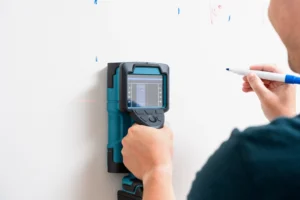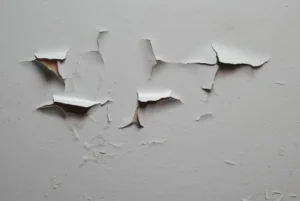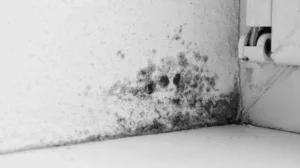When you think of home safety, you probably think about fire alarms, secure locks, and maybe carbon monoxide detectors. But there’s another hidden danger that many homeowners overlook – it’s lead. Lead exposure, especially in older homes, can be a serious health risk, particularly for young children and pregnant women. If you live in an older home or are planning to renovate, it’s important to consider lead testing in NYC to ensure your space is safe.
Read this blog to learn about lead testing 101, how it works, and why it’s essential for your health and peace of mind.
What is Lead, and Why Is It Dangerous?
Lead is a toxic metal that was commonly used in household paints, plumbing, and even gasoline up until the late 20th century. In homes built before 1978, lead-based paint was often used in walls, windowsills, doors, and other areas. The danger comes when lead-containing materials deteriorate, creating dust or chips that can be inhaled or ingested.
How Does Lead Testing Work?
Lead testing is the only way to confirm if there’s lead in your home. There are a few different methods that professionals use to test for lead, and understanding these can help you decide the best option for your needs.
1. Lead Paint Testing
This is the most common type of lead testing in NYC and is typically used when testing older homes for lead-based paint. A certified professional uses a special tool, often an X-ray fluorescence (XRF) device, to scan painted surfaces and determine if lead is present. The XRF device is non-invasive and provides immediate results, which makes it a convenient option.
If you want a quicker and cheaper alternative, there are also lead paint test kits available, but these typically only give you an idea if lead is present—they might not be as accurate as professional testing.
2. Dust Testing
Lead dust can be a serious hazard, especially in homes with peeling or chipping paint. Dust testing involves collecting samples of dust from surfaces like windowsills and floors. The sample is then sent to a lab for analysis. This test is especially useful in homes with children, as they are more likely to be in close contact with dust particles.
3. Soil Testing
Lead can also leach into the soil surrounding your home, particularly in areas where there is lead-based paint or in places near old industrial sites. Soil testing can help determine if lead has contaminated the dirt around your home. This test is often done in yards or gardens where children play or where you might grow food.
4. Water Testing
In some older homes, lead pipes or lead-soldered pipes may still be in use. Lead can contaminate your drinking water if the plumbing is made from lead. A water sample can be collected and tested for lead content. This is particularly important if your home has older plumbing or if you’re planning to install a new water system.
When Should You Consider Lead Testing?
It’s always better to err on the side of caution when it comes to lead exposure, but there are certain situations where lead testing in NYC should be a priority:
1. If You Live in an Older Home
Homes built before 1978 are more likely to contain lead-based paint, as that’s when it was banned for residential use. If your home is older than that, it’s a good idea to have it tested, especially if you plan on doing renovations or if you have young children in the house.
2. Before Renovations or Repairs
If you’re planning to remodel or make repairs to an older home, it’s critical to test for lead before you start. Renovation work can disturb lead-based paint, creating harmful dust or debris that can spread throughout your home. If lead is detected, you’ll need to take precautions to safely remove or encapsulate the lead before you begin work.
3. If You Have Young Children
Since children are more vulnerable to lead exposure, if you have kids under six, it’s essential to test your home. Children tend to put things in their mouths, including hands, toys, or other objects that may have come in contact with lead dust.
4. If You’re Buying or Renting a Home
If you’re moving into an older home, it’s a smart idea to have a lead test done before you sign the contract. Many cities, including New York, require landlords to test for lead in rental properties built before 1978.
What to Do If You Find Lead?
If lead is found during testing, it doesn’t necessarily mean you have to pack up and leave. There are steps you can take to manage lead in your home:
1. Hire Professionals for Removal
If lead-based paint or dust is found, it’s best to hire professionals to remove it safely. DIY lead removal can be risky and might expose you to even more lead dust.
2. Use Encapsulation
In some cases, instead of removing lead paint, you can encapsulate it with a special coating to prevent exposure. This is a temporary solution, but it can help keep your home safe until you can do a more extensive lead removal.
3. Regular Cleaning
If you’re dealing with lead dust, regular cleaning with a wet cloth or mop can help reduce the amount of lead particles in the air. Be sure to clean areas where dust tends to settle, like windowsills, baseboards, and floors.
Also Read: Make Your Property Lead-Free with Local Law 31
Get Professional Help from NYC Lead & Mold
If you suspect lead in your home or are planning a renovation, lead testing in NYC is the first step. At NYC Lead & Mold, we’re here to provide accurate, professional lead testing and removal services. Our team of experts will ensure that your home is safe from lead exposure and that you’re taking the necessary steps to protect your family’s health.
Take action today to keep your home lead-free and your family safe. Call us now for a consultation!








